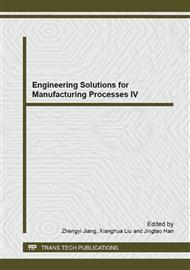[1]
Michael E. Porter The Competitive Advantage of Nations [M]. HuaXia Press, 2001: 69. (In Chinese).
Google Scholar
[2]
Prouder, Richard, St. John, Caron H. Hot Spots and Blind Spots: Geographical Clusters of Firms and Innovation [J]. Academy of Management Review, 03637425, 1996, Vol. 21, Issue 4, 21(4): 1192-1225.
DOI: 10.5465/amr.1996.9704071867
Google Scholar
[3]
Markusen. Sticky places in slippery space a typology of industrial districts [J]. Economic Geography, 1996(72): 293-313.
DOI: 10.2307/144402
Google Scholar
[4]
Ning Cai, Shuan-zhu Yang and Bing Jie. A Research on the Risk of Industrial Clusters: From the Perspective of Network[J]. China Industrial Economy, 2003, (04).
Google Scholar
[5]
Guan Zhou, Chun-mei Hu. A Research of Risk management and risk cluster warning indicators of Industrial Clusters [J]. Economic Forum, 2007. 6. (In Chinese).
Google Scholar
[6]
Klepper S. The Origin and Growth of Industry Clusters: The Making of Silicon Valley and Detroit [J]. Journal of Urban Economics, 2010, Vol. 67, Issue1, 67(1): 15-32.
DOI: 10.1016/j.jue.2009.09.004
Google Scholar
[7]
Silvia Marginean. Advantages and Disadvantages of Clusters-A Theoretical Approach [J]. Revista Economical, 2009, Vol. 44, Issue1, 44(1): 36-40.
Google Scholar
[8]
Jian-hua Yin, Er-peng Xu and Zhao-hua Wang. Research on the Risk of Industrial Clusters Based on the Fuzzy Evaluation [J]. Science of Technology Progress and Policy, 2009. 6. (In Chinese).
Google Scholar
[9]
Yong-heng Fang. The Performance Evaluation of Industrial Clusters Based on Fuzzy Analytic Hierarchy Process [J]. Science and Technology Management Research, 2010. 12. (In Chinese).
Google Scholar


